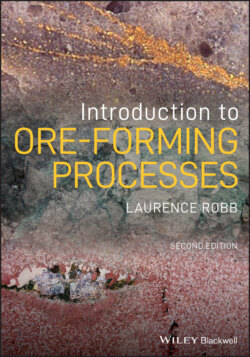Читать книгу Introduction to Ore-Forming Processes - Laurence Robb - Страница 43
Geological Time Scale
ОглавлениеThe development of a geological time scale has been the subject of a considerable amount of thought and research over the past few decades and continues to occupy the minds and activities of stratigraphers and geochronologists around the world. The definition of a framework within which to describe the secular evolution of rocks, and hence the Earth, has been, and continues to be, a contentious exercise. The International Commission on Stratigraphy (ICS is a working group of the International Union of Geological Sciences: IUGS) has assumed the official role of developing the geological time scale, a task that is continuously being modified and improved upon. The work of the ICS is periodically published as a book, such as Harland's (1989) seminal A Geologic Time Scale – which has now been superseded a number of times by works such as Gradstein et al. (2004 and 2012) and Ogg et al. (2016). In these books reference is made to the timing of various events and processes and the provision of a time scale to which readers can refer. Figure 5 is a time scale based on the 2018 version of the International Stratigraphic Chart, published and sanctioned by the ICS and IUGS (http://www.stratigraphy.org). In this diagram global chronostratigraphic terms are presented in terms of eons, eras, periods, and epochs, and defined by absolute ages in millions of years before present (Ma). Also shown are the approximate positions on the time scale of many of the ore deposits and metallogenic provinces referred to in the text.
Figure 5 Geological time scale after the International Commission on Stratigraphy (http://www.stratigraphy.org/index.php/ics-chart-timescale). Also shown are the ages of the various deposits and metallogenic provinces mentioned in the book.
